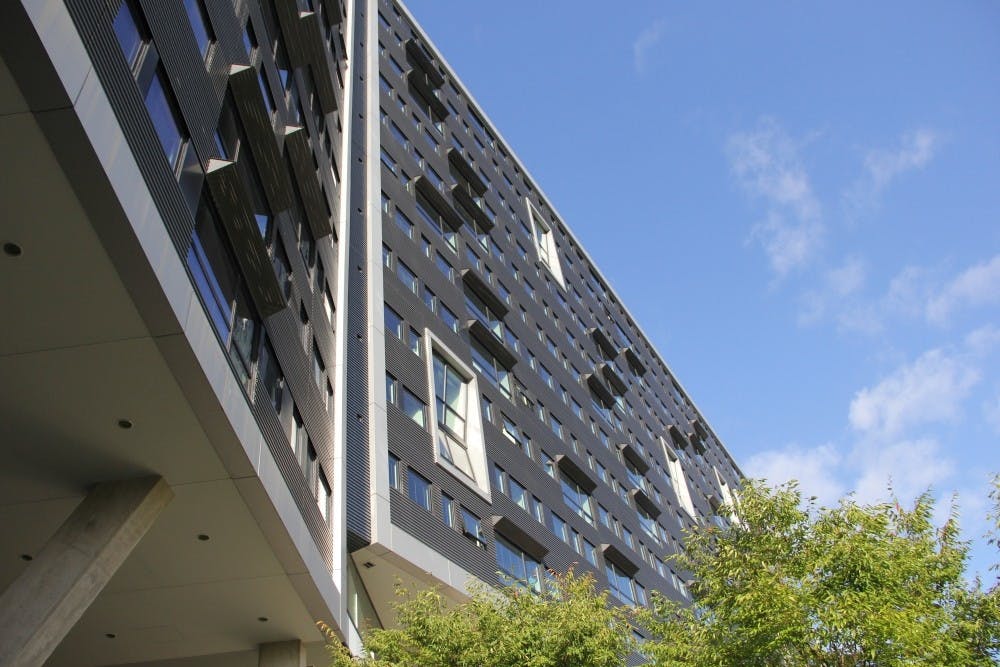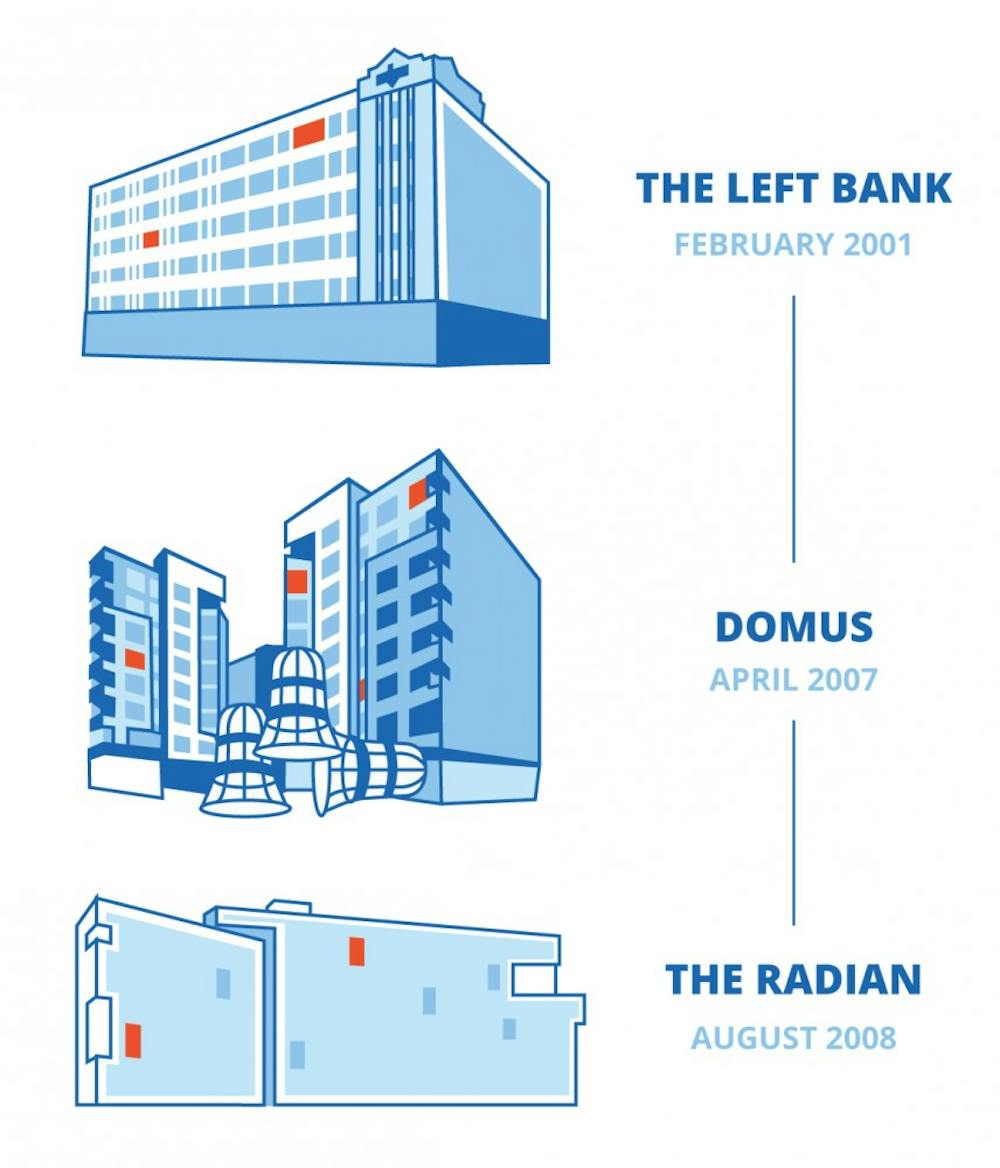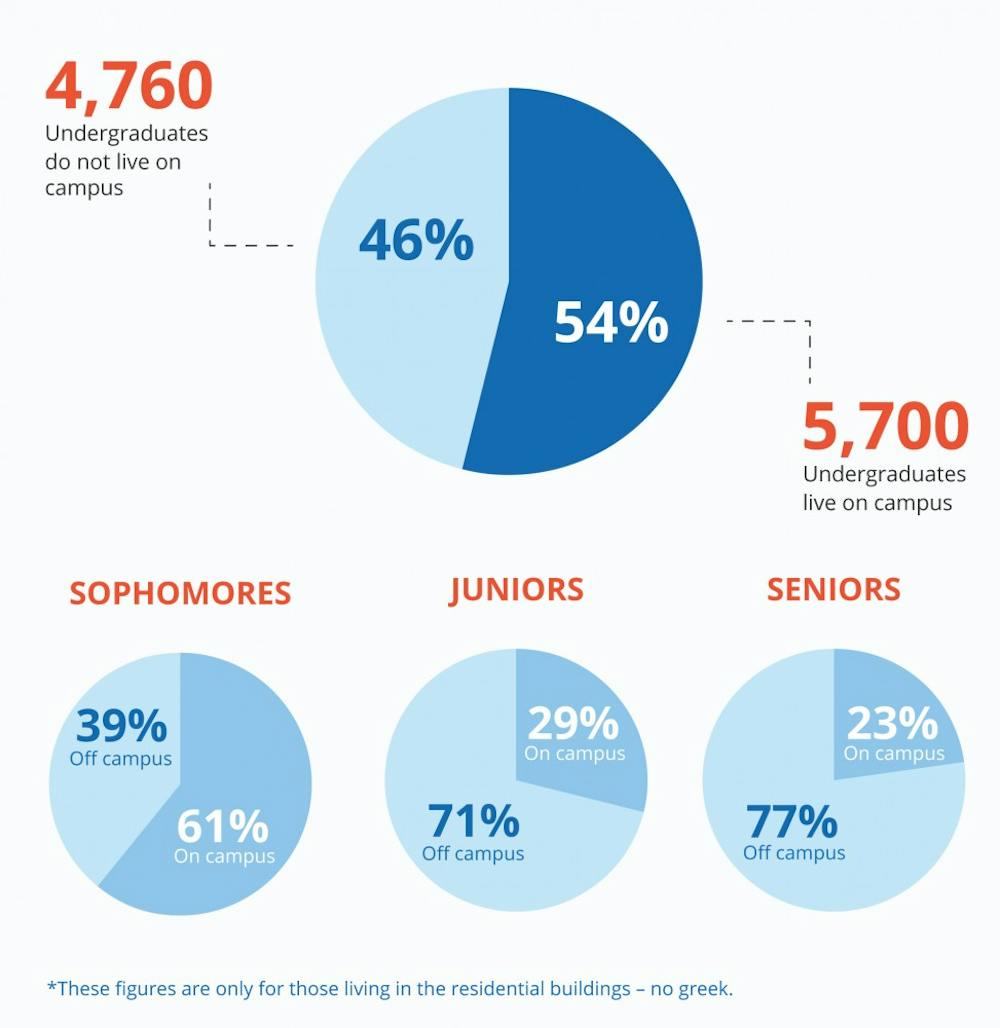
Almost a decade ago, two luxury apartment complexes popped up in University City, changing the urban landscape of campus. The Radian and Domus are now distinctive fixtures of University City, though some students worry that these apartments have exacerbated socioeconomic divisions in the Penn community.
In April 2007, the luxury apartment complex Domus opened on the intersection of 34th and Chestnut streets. The 14-story complex was largely designed for families, graduate students and Penn faculty and staff, though numerous undergraduate students live there today.
Just a year later, the Radian opened its luxurious doors on August 2008 to Penn students — its target demographic — on 39th and Walnut streets. Many students were clearly excited about the new off-campus residential housing — six months prior to its opening, all the complex's units were fully leased.
A 12-month lease of a four-bedroom unit at the Radian costs approximately $1,650 to $1,700 per person each month, while a one-bedroom unit is listed at just above $2,000. A two-bedroom unit at Domus costs approximately $1,700 per person.
The development of these two luxury housing projects was the University’s effort to expand the range of housing closer to campus.
“The concept is to help facilitate residents to the core of campus, relieving pressure further west,” Paul Sehnert, Penn’s Director of Real Estate Development at the time, said.

At the opening of another campus luxury apartment complex the Left Bank in 2001, former Penn President Judith Rodin said expanding the range of residential options on campus would be a key factor in revitalizing University City.
“It underscores the confidence that private investors have in the vitality of University City, and knowing that this is one of the knowledge hubs for the region, investing here makes very good sense," Rodin said.
But despite the University’s intentions to boost local economy, some students have expressed that the presence of off-campus luxury housing options has divided the student body along socioeconomic lines. In fact, students have said that even the choice to move off campus can be economically prohibitive to students on financial aid.
When Wharton and Engineering sophomore Roshan Benefo first came to Penn, he was surprised to find that such a large majority of students lived off campus.
Spokesperson for Penn Business Services Division Barbara Lea-Kruger said that in 2017, approximately 5,700 undergraduates live on campus — 54 percent of the total undergraduate population. While almost 100 percent of freshman are required to live on campus, approximately 61 percent of sophomores, 29 percent of juniors and around 23 percent of seniors live on campus. Lea-Kruger added that these figures are only for students living in the residential buildings and do not include Greek housing.

Benefo said he was also surprised at the high-end amenities that some of the off-campus apartments such as the Radian and Domus had.
“I was a little bit disappointed coming into the school, because I didn’t know that so many people lived off campus after their freshman year,” Benefo said. “This works against the idea of community that I was really going for.”
“I guess it shocked me a little when I went into Domus, just compared to where I was living,” he said. “I’m not being denied anything [by living in the high rises], but I find it problematic that once people start living in these luxury houses, the social circles can become constrained to those that live in those places … it’s essentially dividing up students based on what they can and cannot pay for,” he said.
Executive Director of Real Estate Ed Datz was not immediately available to respond to a request for comment.
College sophomore Alina Peng, who lives in the high rises, shared Benefo’s sentiment that friendships could be reinforced based on where people lived after freshman year, but added that she doesn't think apartment complexes like the Radian and Domus are entirely exclusive to wealthy students.
“I know some people at the Radian who are sharing the room and splitting the rent, and getting a good deal. So there are ways, even for those who are on scholarships or financial aid, to get good housing and get it for cheap,” Peng said.
College sophomore Ellen Kim, who currently lives in Domus, said splitting a two-bedroom unit among three roommates, including herself, cut the rent in half for her.
“Since it’s a nice apartment complex, the perception of Domus is that it is elitist and seems inaccessible, but for my situation, I’m actually paying less than I would be in a campus high rise,” Kim said.
The Daily Pennsylvanian is an independent, student-run newspaper. Please consider making a donation to support the coverage that shapes the University. Your generosity ensures a future of strong journalism at Penn.
Donate




